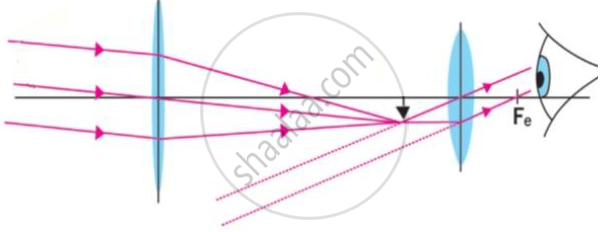Advertisements
Advertisements
प्रश्न
Complete the following table:
| Type of lens | Position of object | Nature of image | Size of image |
| Convex | Between optical centre and focus | ||
| Convex | At focus | ||
| Concave | At infinity | ||
| Concave | At any distance |
उत्तर
| Type of lens | Position of object | Nature of image | Size of image |
| Convex | Between optical centre and focus | Virtual and upright | Magnified |
| Convex | At focus | Real and inverted | Very much magnified |
| Concave | At infinity | Virtual and upright | Highly diminished |
| Concave | At any distance | Virtual and upright | Diminished |
APPEARS IN
संबंधित प्रश्न
An object is placed at a distance of 15 cm from a convex lens of focal length 20 cm. List four characteristics (nature, position, etc.) of the image formed by the lens.
A 1 cm high object is placed at a distance of 2f from a convex lens. What is the height of the image formed?
Which type of lenses are:
thicker in the middle than at the edges?
A lens forms an upright and magnified image of an object. Name the lens.
Observe the following figure and answer the questions.

a) Which optical instrument shows arrangement of lenses as shown in the figure?
b) Write in brief the working of this optical instrument.
c) How can we get different magnifications in this optical instrument?
d) Draw the figure again and labelled it properly
An object 4.0 cm in size, is placed 25.0 cm in front of a concave mirror of focal length 15.0 cm.
(i) At what distance from the mirror should a screen be placed in order to obtain a sharp image?
(ii) Find the size of the image.
(iii) Draw a ray diagram to show the formation of the image in this case.
State the nature and position of the object on the principal axis to obtain a virtual and magnified image.
Where should an object be placed in front of a convex lens so as to form an inverted and enlarged image? Will the image be real or virtual? Draw a ray diagram to illustrate your answer.

Define the principal focus of a convex lens.
